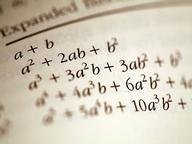Quiz Answer Key and Fun Facts
1. What property is not found in every ring?
2. A group of this order is NOT guaranteed to be Abelian.
3. What group can be written as: {(123), (132), (213), (231), (312), (321)}?
4. A group of order 150 cannot have a subgroup of this order.
5. What extension field is the algebraic closure for the reals?
6. A commutative ring where AxB=0 implies that A=0 or B=0 is called what?
7. Which of these sets is an ideal in the ring of integers?
8. What is the degree of the splitting field of the polynomial X^3 - 2 over the rationals?
9. What is the Galois group for the splitting field Q[sqrt(2)+sqrt(3)]?
10. Under Galois theory, the roots of a polynomial is solvable by radicals if and only if the polynomial's Galois group is . . .
Source: Author
tralfaz
This quiz was reviewed by FunTrivia editor
crisw before going online.
Any errors found in FunTrivia content are routinely corrected through our feedback system.

